NIL
Brent Blum Named Director of NIL Development for Cyclone Sports Properties
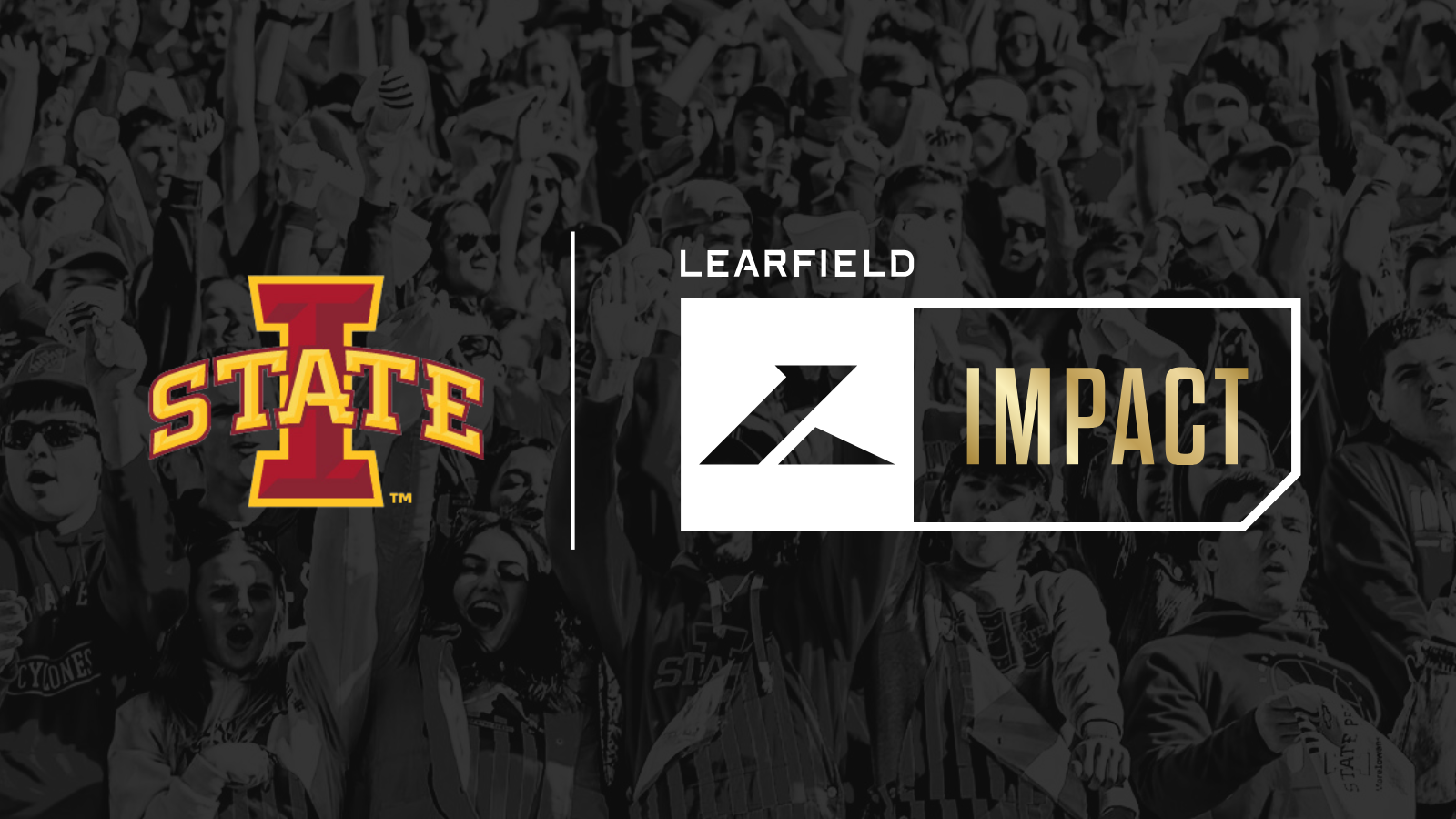
Jake Lovell and MaryKate Walling set to join Learfield Impact NIL team at CSP
AMES, Iowa – Learfield’s Cyclone Sports Properties, in partnership with Iowa State Athletics and Learfield Impact, Learfield’s industry-leading Name, Image and Likeness (NIL) service combining the power of expert people, award-winning content, and innovative technology, has announced the appointment of Brent Blum as the new Director of NIL Development, Jake Lovell as NIL Partnerships and Operations Coordinator and MaryKate Walling as NIL Content Producer.
“We are excited to launch this innovative initiative with Learfield as we navigate this new world intercollegiate athletics enters starting July 1,” ISU Director of Athletics Jamie Pollard said. “We believe that these positions are a continued evolution of our long-standing partnership and allow us to create additional opportunities through existing and new corporate partners.”
Learfield Impact integrates the addition of these three on-campus NIL leadership positions, innovative technology in the form of Learfield’s Compass NIL dealmaking platform, and the Emmy Award-winning Learfield Studios content team into an unmatched full-service NIL offering. This powerful combination seamlessly generates authentic dealmaking and creates opportunities for influential storytelling content between student-athletes and brand partners.
In this newly created role, Blum will help oversee the university’s evolving NIL strategy, working closely with student-athletes, coaches and donors, as well as the Iowa State Foundation and corporate partners to build innovative and sustainable support. His work will focus on aligning the athletic department’s NIL vision with national best practices while staying true to the culture and values of Iowa State.
Blum currently serves as Executive Director of the We Will Collective, where he has helped raise over $12 million in support of Iowa State student-athletes, backed by contributions from more than 10,000 individual donors and area businesses.
“Cyclone Nation’s involvement is as important as ever as we tackle this transition in college athletics,” Blum said. “This next chapter gives us the opportunity to build a more unified and long-term NIL infrastructure for Iowa State. In the short term, continued support of We Will is vital as we move forward.”
Lovell, who has been a member of the CSP staff for three years, will assist Blum in fulfilling NIL sponsorships and Walling, who received both her undergraduate and master’s degrees from Iowa State while working as a content producer for the Cyclone Football program, will produce NIL-related content for CSP sponsors.
With the House settlement approved by Judge Claudia Wilken earlier this month, the Iowa State Athletics Department will now provide direct financial support to Cyclone student-athletes on top of the world-class education and other benefits that they currently receive. Nearly every Cyclone student-athlete will receive a financial payment from the University for their NIL rights beginning on July 1.
Iowa State Athletics will provide the maximum revenue-sharing amount allowed, currently projected to be $20.5M for the 2025-26 fiscal year, by the House settlement to its student-athletes. The We Will Collective will begin transitioning its members to the We Will Fund that will be housed within the ISU Foundation next month. Contributions to the We Will Fund will allow donors to invest in the support of student-athletes while helping ISU ensure future success of its championship-caliber programs.
“The Iowa State fan base has long-been recognized as one of the nation’s most-loyal, and their continued generous support of the We Will Fund will be critical as we move into college athletics’ new era,” Pollard said. “We are grateful for all of our fans who have contributed to the We Will Collective over the last few years and it is our sincere hope they continue that support as we transition to the We Will Fund to ensure that our programs are positioned for greater success in this new era.”
About Learfield
Learfield is the leading media and technology company powering college athletics. Through its digital and physical platforms, Learfield owns and leverages a deep data set and relationships in the industry to drive revenue, growth, brand awareness, and fan engagement for brands, sports, and entertainment properties. With ties to over 1,200 collegiate institutions and over 12,000 local and national brand partners, Learfield’s presence in college sports and live events delivers influence and maximizes reach to target audiences. With solutions for a 365-day, 24/7 fan experience, Learfield enables schools and brands to connect with fans through licensed merchandise, game ticketing, donor identification for athletic programs, exclusive custom content, innovative marketing initiatives, NIL solutions, and advanced digital platforms. Since 2008, it has served as title sponsor for the acclaimed Learfield Directors’ Cup, supporting athletic departments across all divisions.
NIL
Heisman finalist reveals why major college football program declined bowl game
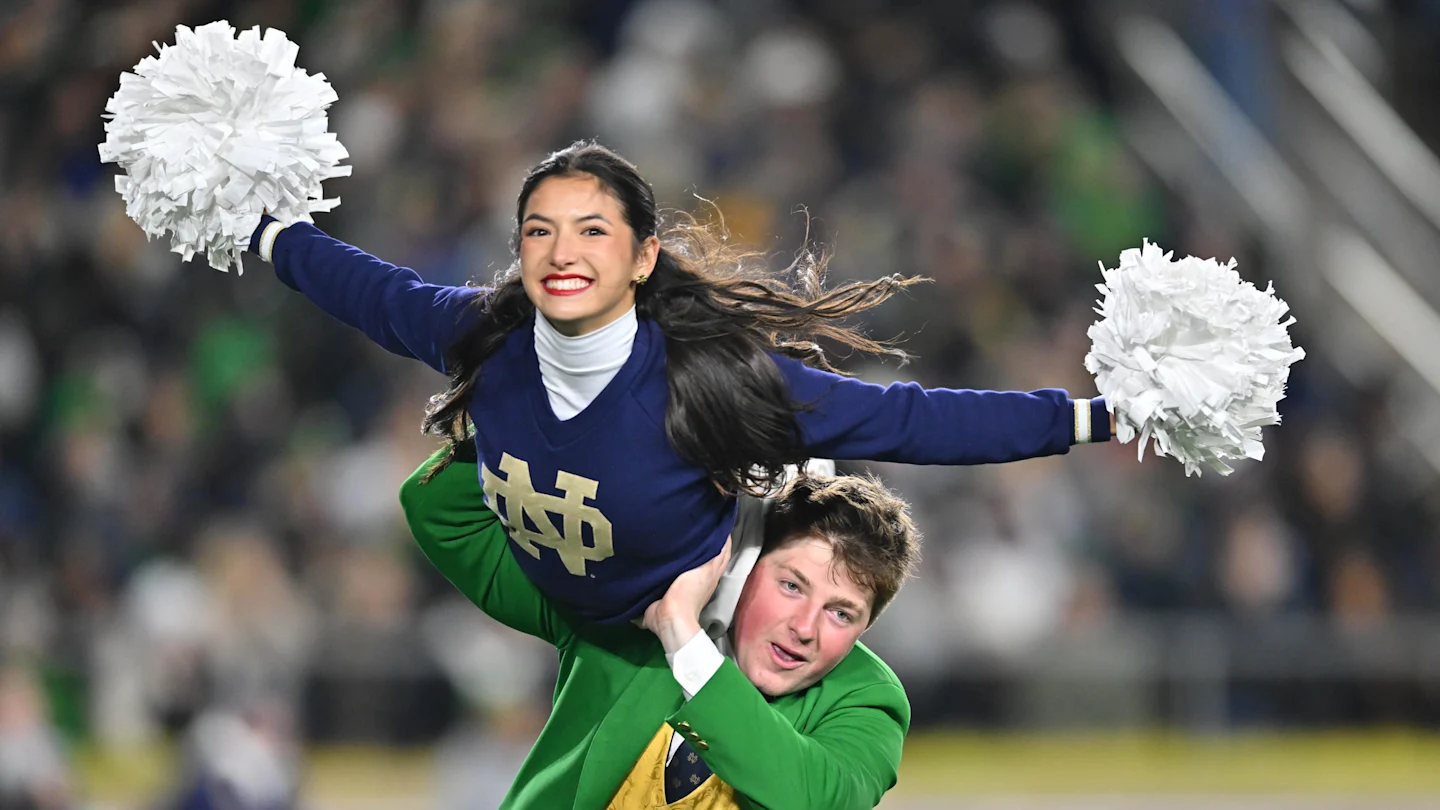
The decision by Notre Dame to decline playing in a bowl game turned out to be one of the most-discussed choices made by any school in the 2025 college football season.
Now, one of the team’s most talented players is going public with why they decided to forgo the postseason entirely after missing the College Football Playoff.
Notre Dame running back and Heisman Trophy finalist Jeremiyah Love says the players were the deciding factor in ending their season.
Notre Dame made a team decision
“It was kind of a full team decision, full consensus decision,” Love said on SportsCenter.
“Our captains asked all of the players that they could, you know, what they think about the bowl games and things like that. And we all came to a consensus, or final decision, that we didn’t think that playing in that bowl game would really represent our 2025 football team in the right way.
“Because we feel like our team was just very special throughout the year, we did a lot of great things, and in that bowl game, a lot of people are going to opt out. A lot of people are just going to not play, or have their own plans … which, rightfully so. They have that right.”
Notre Dame was left out of the playoff
Notre Dame looked poised to take one of the dozen places in the College Football Playoff, but the selection committee reversed course on the last day, and swapped it out for Miami instead.
While most observers agreed in theory with that move since Miami beat Notre Dame this season, the timing of the decision and perceived lack of an explanation as to why then and not before, left the Irish enraged.
Enough to decline playing any bowl game at all.
“We didn’t feel like that team that would go into that bowl game was a great representation of how special this 2025 football team was,” Love said.
“So we all came to a consensus of, you know, we don’t want to put this team in a bad light because we feel like it was a great team.”
He added: “We’re not saying playing in a bowl game would put us in a bad light, but it just wouldn’t be the best representation of our team. So that ultimately led us to come into that decision.”
What Jeremiyah Love has done for Notre Dame
Love was a crucial element in the success Notre Dame had on the field that put them in playoff contention in the first place.
The running back had 199 carries for 1,372 yards and 18 touchdowns on the ground, catching 27 passes for 280 more yards and another 3 touchdowns.
His 21 total touchdowns set a new single-season Notre Dame record, surpassing Jerome Bettis.
But that could be the last time we see him on the field in the gold helmet given the Irish will not play again this season, and if he decides to enter the NFL Draft this spring.
Read more from College Football HQ
NIL
CNN points out ‘cultural problems’ at historic college football program

Scandal is an inevitable thread in the fabric of college football. Pretty much every major school as waded through one or two notable scandals involving administrators, coaches or players on a particular team. But there’s one Big Ten school, and college football program, who might be the new “Scandal U.”
That was a popular phrase around Louisville, KY in regard to the Cardinals’ run of scandals that included mismanaged funds by a university president, a strippers-in-the-dorms basketball scandal, an FBI probe, a playbook-stealing scandal called Wakey-Leaks (after Wake Forest) and the list goes on. Well, the Ville can now mover over after getting their act together in the 2020s, because Michigan is the new big bad rulebreaker in college athletics.
In light of Michigan head football coach Sherrone Moore’s firing this week, one of the largest news outlets in America, CNN, decided to do dig into the noticeably high number of scandals that have rocked Michigan of late. Of course, Moore was fired, for cause, do to an inappropriate relationship with a staffer. But he’s only the latest in a long line of Michigan men who’ve gotten their hands a bit dirty.
CNN noted the following occurrences all within the Michigan athletics department over the last few years:
Michigan Scandal Rundown
- Head football coach Sherrone Moore was fired over an inappropriate relationship with a staffer, then later arrested the same night he was fired.
- Head football coach Jim Harbaugh was suspended for several games during the 2023 national championship season over recruiting violations.
- Head football coach Jim Harbaugh left college football after 2023 with a 10-year show cause, four years of probation for Michigan, plus millions in fines over a sign-stealing scandal that dominated the entire 2023 college football news cycle.
- Football assistant Connor Stalions was let go for his very direct involvement in organizing and enacting the sign-stealing scandal.
- Head basketball coach Juwan Howard was suspended for slapping an opposing assistant coach during a handshake line and then fired after that season.
- Head hockey coach Mel Pearson, was not retained after investigations discovered the program urged athletes to lie on COVID tests and also had reports of verbal assaults on female staff members.
- Football assistant Matt Weiss was let go after it was discovered that he was hacking into students’ accounts to steal private photos of them.
That’s a tornado of bad ripping through Ann Arbor over just a couple of seasons. And while the basketball and hockey stories were tough situations, most of these scandalous missteps have come from the football program. According to CNN, there’s just one big culture problem under athletic director Warde Manuel.
CNN notes deeper problems with UM athletics

“People associated with Michigan athletics have told CNN that they believe there is a cultural problem, if not of indifference, certainly of arrogance,” they wrote. Going beyond just the bad behavior from people hired by Michigan, CNN reports that the school’s firing process itself raises major red flags.
“A source familiar with the matter said that Manuel dismissed Moore without anyone from human resources present, and – while that is not required – it is standard behavior at most companies,” CNN added, which is true, especially for a situation like Moore. In fact, he’s the example of why HR is used in that capacity, to maybe prevent something messy from transpiring afterward, which is exactly what happened.
Perhaps 2026 can offer a new day for Michigan. The Jim Harbaugh era ended with raging success on the field but has left a disastrous wake. With Moore now out, the Wolverines can start anew and bring in a head coach completely severed from the Harbaugh era and the baggage it brought.
More on College Football HQ
NIL
Buffs football’s pursuit of ‘powerhouse’ status is unrealistic
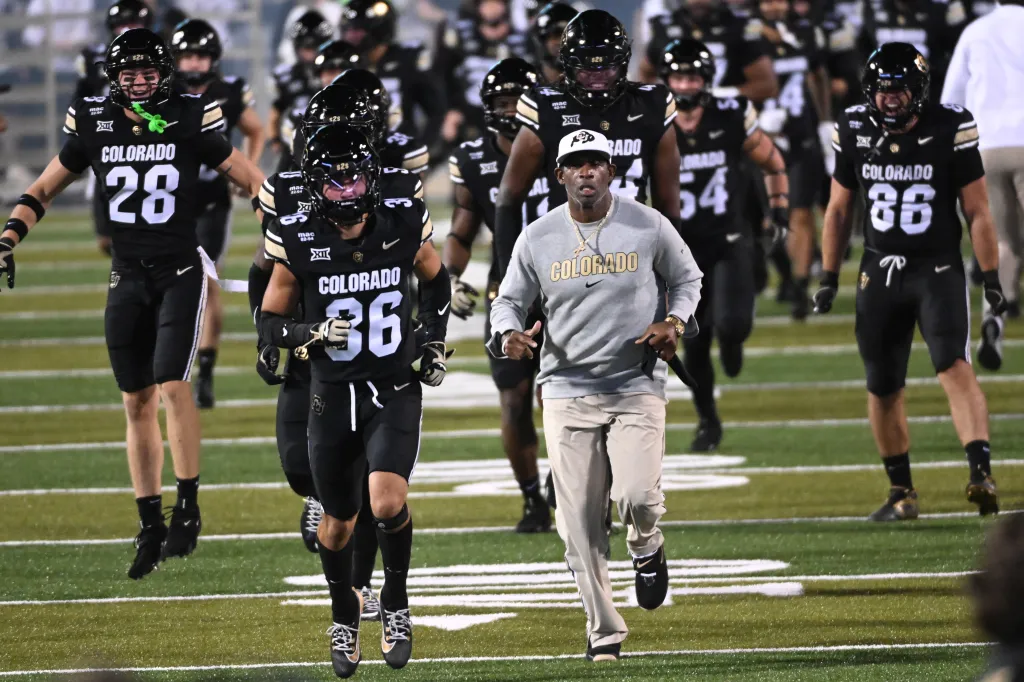
The University of Colorado is a remarkable place. It sits at the foot of the Flatirons, draws students from around the world, and shapes the state’s scientific, cultural and economic life more than almost any other institution. I have spent a lifetime connected to this university, and I say this as someone who cares deeply about its success: CU probably will never be a “sustained” national football powerhouse. And that’s not an insult. It’s an honest acknowledgment of the landscape we now live in and, if anything, a plea that we stop chasing a mirage that drains time, money and energy from what CU actually does best.

Let me be clear: CU can have great seasons. It can produce electrifying moments, top-10 rankings, thrilling Saturdays at Folsom Field (hopefully not at 8:00 p.m.) and the kind of storylines that make the country look west for a couple of weeks. But a powerhouse, the kind that reloads every year, bulldozes competition, outspends everyone and expects to contend for national titles as a matter of routine, is a different category altogether. And Colorado simply doesn’t have the structural ingredients to be competitive at a very high level every year.
Start with geography. The equation is simple: football powerhouses sit atop enormous recruiting bases. Texas, Georgia, Florida and Ohio each produce dozens of blue-chip recruits every year. Alabama has no major in-state competition and can pull from the entire Southeast. Colorado produces a handful of elite prospects, usually fewer than five. You can’t build a perennial top 10 program when your home state gives you a roster the size of a pickup basketball team. You have to fly everywhere, fight everyone and overpay for out-of-state talent just to stay competitive.
Then consider stadium economics. Folsom is one of the most beautiful venues in America, but beauty doesn’t pay the bills. At just over 50,000 seats, it isn’t even in the top 50 nationally. Meanwhile, the schools we’re comparing ourselves against have 85,000 to 105,000-seat cathedrals humming with revenue: premium clubs, suites, donor boxes, end-zone complexes. That difference alone produces tens of millions of dollars in additional annual operating revenue. CU will never be able to replicate that scale in Boulder, nor should it try.
Which brings us to finances. Even before the current deficit, CU’s athletic budget has hovered around $140 million, going up recently toward $160 million. That sounds large until you look around. Ohio State is over $290 million. Texas is not far behind. Georgia and Alabama are in the same orbit. LSU just hired a coach for $91 million in a multi-year deal — at a public institution. This is not a market CU can play in. It’s not even in the same country.
And now we’ve entered the branding (NIL) era, a world where the top programs spend $20-40 million annually not on coaching, not on facilities, but on the players themselves. Colorado’s donor base, corporate landscape, and statewide culture simply do not support that kind of annual fundraising. We have generous donors, but not South East Conference (SEC) style or Big-Ten boosters who treat Saturdays as a religion. NIL branding is not a temporary trend; it is the defining financial mechanism of modern college football. And CU is on the wrong side of the arms race. Maybe one area of hope with raising the needed money to be competitive is in a third-party private equity agreement. The University of Utah’s athletic department is about to create a new partnership with a private equity firm that could generate an estimated $500 million in revenue.
Culture matters too. Boulder is a place people choose for lifestyle, for mountains, for climate, for academics, for entrepreneurship. This isn’t Tuscaloosa, Columbus or Baton Rouge, where football saturates daily life and where a losing season is treated as a civic crisis. CU students disperse to ski slopes, hiking trails and concerts. Faculty are nationally recognized researchers who did not come to Boulder to live inside the roar of a football machine. That’s not a criticism, it’s precisely what makes Boulder special. But it’s also why Colorado may never be, and should never try to be, an Alabama or Ohio State of the Rockies.
And even in the years when CU succeeds, its success carries its own penalty. Bigger programs simply poach CU’s coaches, coordinators, strength trainers, analysts and recruiters. They can double or triple salaries with little effort. Sustained powerhouses rely on stability and pipelines of talent behind the talent. CU is a destination when things go well, not a home you stay at for decades.
So where does that leave us?
It leaves me with a simple conclusion: CU should aim to be good, competitive, exciting, fiscally healthy and academically aligned, not an imitator chasing a model that doesn’t fit our mission or our reality. The pursuit of “powerhouse” status isn’t just unrealistic; it distorts priorities and pressures the institution to behave in ways that undermine its purpose.
Colorado is at its best when it embraces what it truly is: a world-class research university with a vibrant campus, a beautiful stadium and a football program that can surprise the country every now and then. That is more than enough. It is something to be proud of. And it is infinitely more sustainable than pretending Boulder sits on the same tectonic plates as Austin, Columbus, Tuscaloosa or Athens.
We can love CU football passionately, without insisting it become something it cannot be. That is not cynicism but is realism, spoken with love, for the place that has shaped so much of my life.
Go Buffs!
Jim Martin is a former regent, past chair of CU’s athletic subcommittee, and adjunct law professor, having taught Sports and the Law. Martin regularly provides presentations to various groups on the topic: “The Wild West of Today’s College Athletics.” He can be reached at jimmartinesq@gmail.com.
To send a letter to the editor about this article, submit online or check out our guidelines for how to submit by email or mail.
NIL
$54 million college football coach now favored to be next Michigan head coach
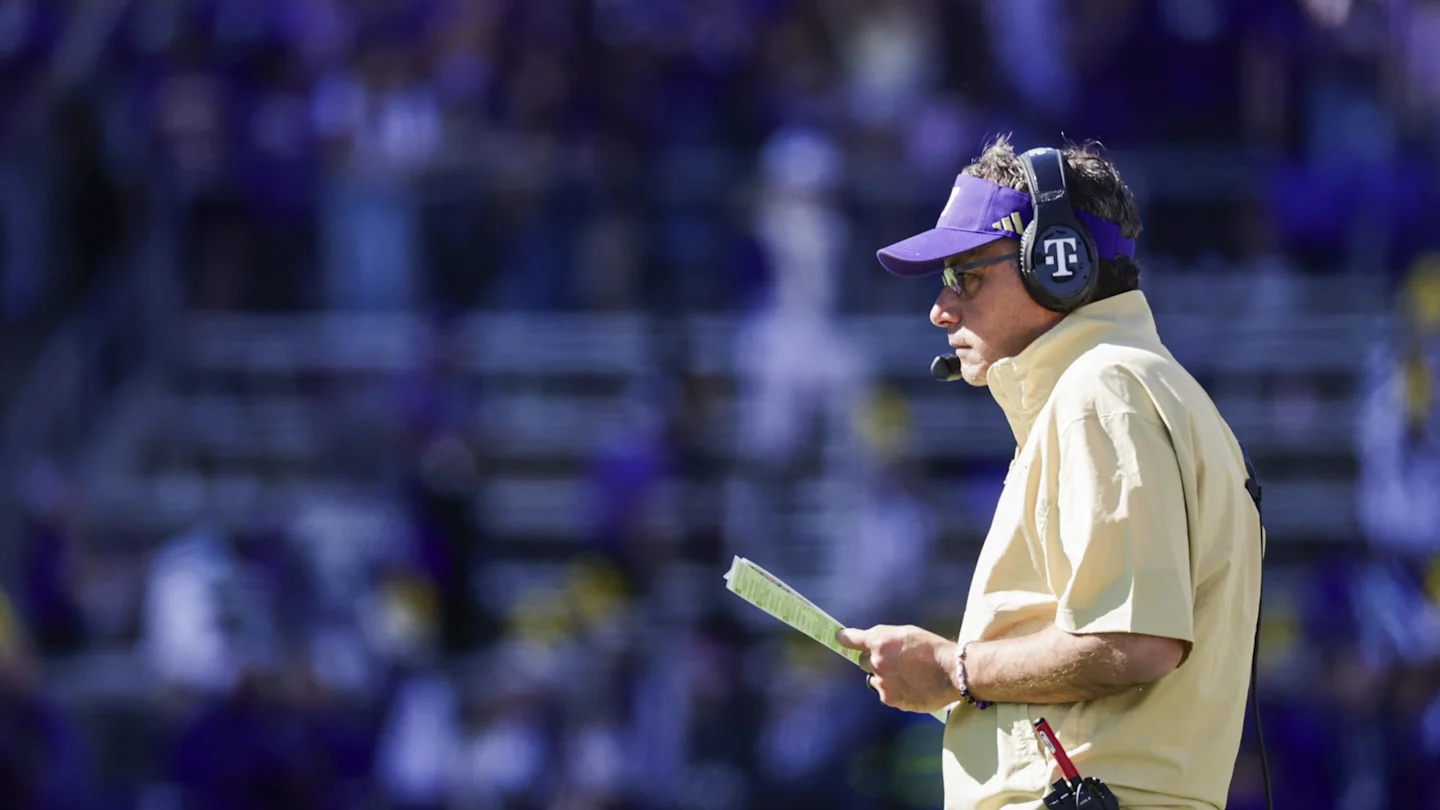
Dillingham Out?
As the ripples of college football’s initial coaching carousel were starting to subside, here it goes again. Michigan was apparently closing in on Arizona State’s Kenny Dillingham as its next coach, but one of Lee Corso’s truisms came roaring back: not so fast, my friend. Dillingham is now rumored to be signing an extension at Arizona State, which means that the Michigan search will continue.
DeBoer A Possibility?
Other rumors with Michigan have centered around Alabama coach Kalen DeBoer. That’s convenient timing, as DeBoer himself is in jeopardy of a fourth loss in a second consecutive season at Alabama. It’s safe to say, as Paul Finebaum asserted recently, that Alabama’s CFP game with Oklahoma could deeply impact DeBoer’s future plans. If DeBoer did leave Alabama, the resulting coaching carousel fallout would likely be massive across the entire sport.
A New Favorite
But a new favorite is jumping thorough the Kalshi prediction market. Washington coach Jeff Fisch has leaped to a 37% chance to take the Michigan job as Dillingham fell from an overwhelming favorite to under 10% chances. Fisch is finishing the second year of a $54 million contract for seven years that he signed with the Huskies before the 2024 season.
Fisch’s Resume
A renowned offensive mind, Fisch graduated from the University of Florida and has climbed the offensive coaching ladder since. He did coach defense briefly with the NFL’s Houston Texans, but he’s otherwise worked on offensive with a bevy of college and pro teams. He’s been the offensive coordinator at Miami, with the Jacksonville Jaguars, and at UCLA.
Fisch rose to prominence in his first head coaching job at Arizona. His Wildcat teams climbed from 1 to 5 to 10 wins in his three seasons there. Since taking over Washington, Fisch is now 14-11 and has taken the Huskies to two bowl games.
Michigan’s Dilemma
Michigan seemed to be in good shape with Sherrone Moore after the departure of Jim Harbaugh to the NFL, but the events of the last week left the Wolverines suddenly without a coach and at a point in the coaching carousel where many of the biggest targets (Lane Kiffin, James Franklin) and even the top secondary targets (Jon Sumrall, Alex Golesh) have already been hired.
Given the uncertainty around the Michigan program, Fisch might make sense simply as one of the quicker hires possible. With Washington preparing for the LA Bowl this evening, Fisch recently reiterated his plan to coach the Huskies in 2026. That said, the prediction market is obviously not quite buying in on that plan.

NIL
Trump calls NIL a ‘disaster’ for college sports and Olympics

NEWYou can now listen to Fox News articles!
When President Donald Trump hosts an event in the Oval Office and opens things up to questions from the media, as he did on Friday while hosting members of the 1980 Miracle on Ice team, you get a lot of dumb questions.
I mean, I get that opportunities to ask the president a question are at a premium, but with Jim Craig and Mike Eruzione on hand, is that the time to ask about Venezuela?!
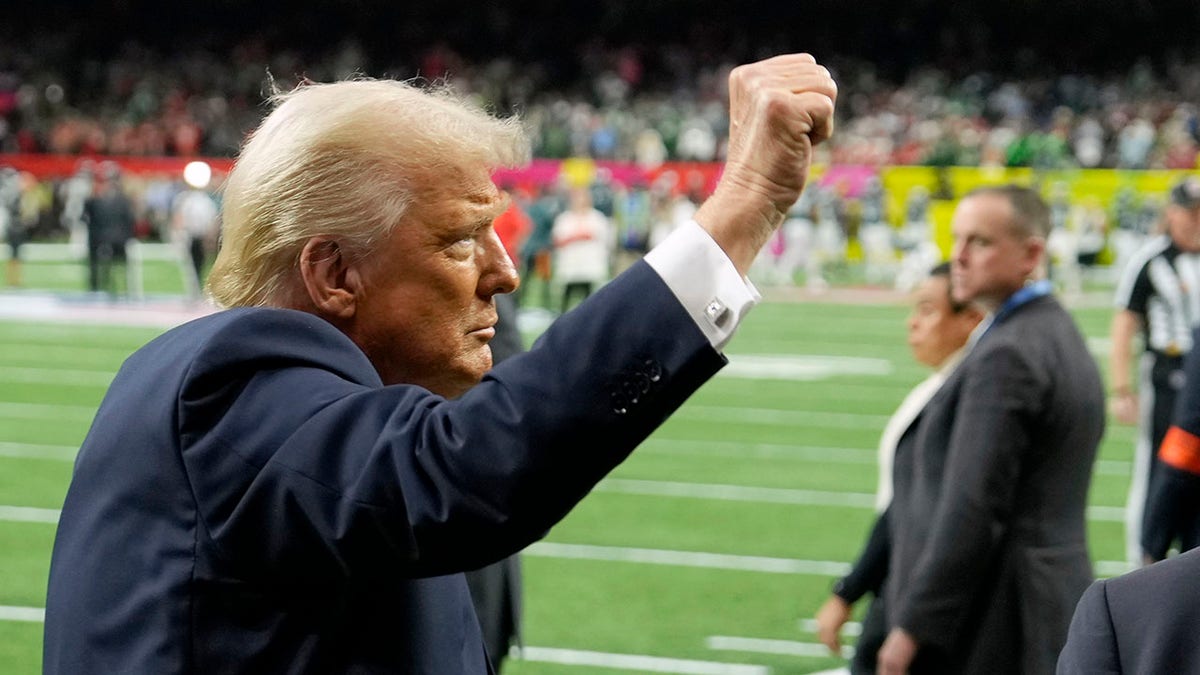
President Donald Trump gestures to the crowd before the start of the NFL Super Bowl 59 football game between the Philadelphia Eagles and the Kansas City Chiefs, Sunday, Feb. 9, 2025, in New Orleans. (AP Photo/Ben Curtis)
Anyway, at least one member of the press asked a question that made a lot of sense, and it had to do with NIL.
CLICK HERE FOR MORE SPORTS COVERAGE ON FOXNEWS.COM
That’s fitting, as back when the Miracle on Ice team played, the Olympics were strictly for amateurs, and most of the team was plucked from various collegiate rosters.
Had they played 40-plus years later, they may have been rolling in some of that NIL dough.
But, as the president noted — and Sen. Ted Cruz would agree with — the current state of NIL is simply not sustainable and could cause serious damage to college athletics, and even the Olympics.

U.S. President Donald Trump, joined by the 1980 U.S. Olympic men’s ice hockey team, holds up a bill to honor the team in the Oval Office of the White House on Dec. 13, 2025 in Washington, D.C. (Anna Moneymaker/Getty Images)
TRUMP WARNS COLLEGE SPORTS ARE IN ‘BIG TROUBLE’ IN CRYPTIC POST
“I think that it’s a disaster for college sports,” President Trump said. “I think it’s a disaster for the Olympics, because, you know, we’re losing a lot of teams. The colleges are cutting a lot of their — they would call them sort of the ‘lesser’ sports, and they’re losing them like at numbers nobody can believe. They were really training grounds, beautiful training grounds, hard-working, wonderful young people. They were training grounds for the Olympics.
“And a lot of these sports that were training so well would win gold medals because of it. Those sports don’t exist because they’re putting all their money into football. And by the way, they’re putting too much money into it, into football.”
President Trump noted that the top-performing athletic programs aren’t making enough money to sustain themselves, given the rate at which they’re paying highly sought-after players.

U.S. President Donald Trump stands with Ohio State Head Coach Ryan Day as he welcomes the 2025 College Football National Champions from Ohio State University to the White House during a ceremony on the south lawn in Washington, District of Columbia, on April 14, 2025. Ohio State won the national championship by defeating Notre Dame 34-23. (Win McNamee/Getty Images)
CLICK HERE TO GET THE FOX NEWS APP
“They’re putting all of their money in, and I know something about it,” President Trump said. “They will not be able to stop. You have a college president [saying], “I’m telling you, sir, we give a guard $7 million, we’re going to win the national championship,’ and they’ll give them seven, then they won’t win it.
“And even if they do win it, colleges cannot afford to be paying the kind of salaries that you’re hearing about.”
Follow Fox News Digital’s sports coverage on X, and subscribe to the Fox News Sports Huddle newsletter.
NIL
Kirk Herbstreit honors Arch Manning with major college football award
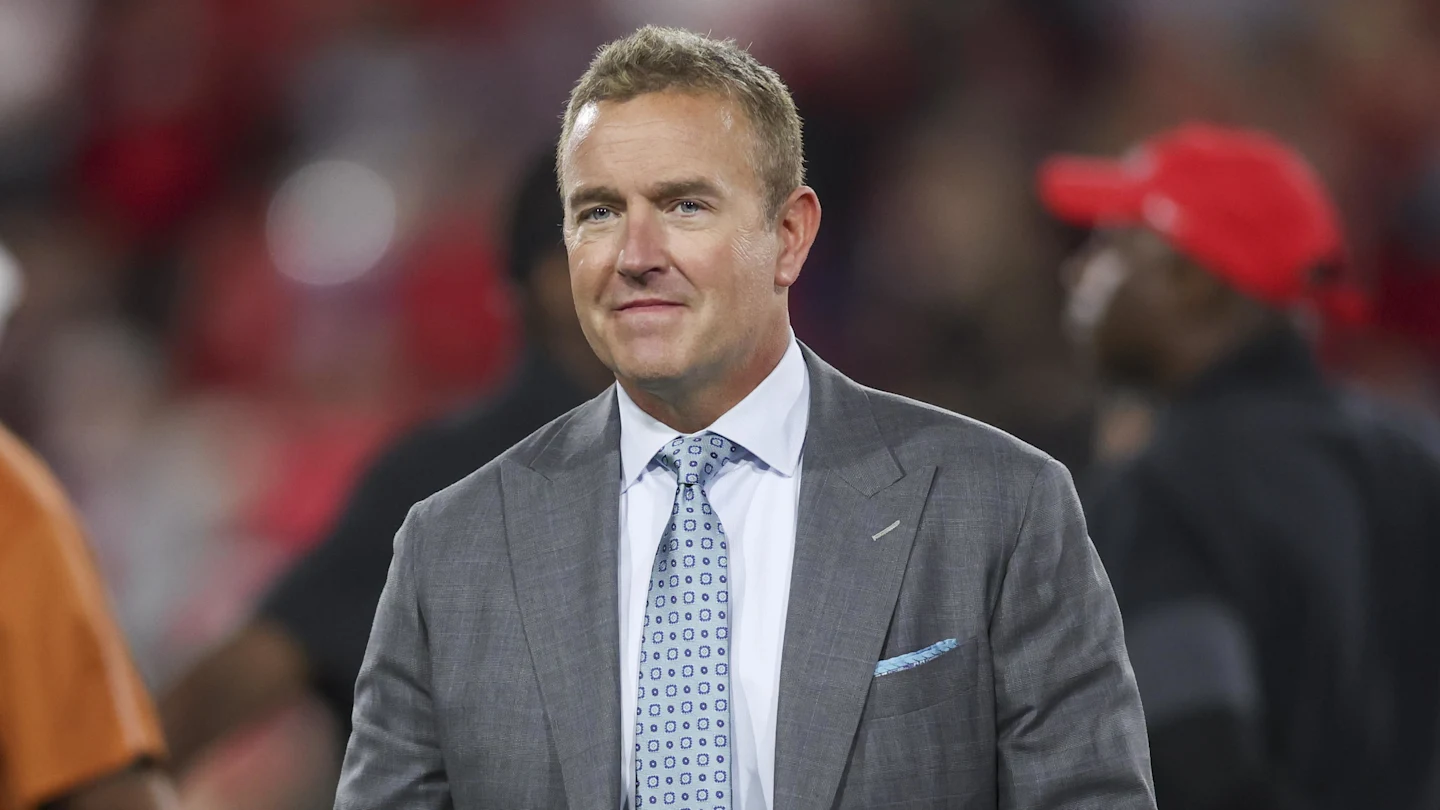
The 2025 college football regular season is over and the time is now for ESPN analyst Kirk Herbstreit to hand out his personal awards for the year ahead of what’s sure to be an entertaining postseason. He calls them the Herbie Awards, which are given out to worthy somebodies across various categories.
For instance, you can go read who Herbstreit selected as his Offensive Player of the Year right here. But one of the awards Herbstreit came up with was called the Redemption Player of the Year, which he said is intended to award a guy who bounced back from an injury, a poor season the year before, or even someone who showed extraordinary growth from Week 1 to Week 14.
He nominated three players for the honor: Texas quarterback Arch Manning, Alabama linebacker Deonte Lawson, and Notre Dame defensive end Boubacar Traore. As you should already know, Herbstreit opted to give the Redemption Player of the Year honor to the most famous name in college football, Arch Manning, for navigating a difficult year into a very positive finish for he and the Longhorn program.
“I think he came in with unrealistic expectations,” Herbstreit said of the Texas QB. “When this season started, people were talking about, ‘He’s going to win the Heisman Trophy. He’s better than Payton. He’s better than Eli. He’s better than his grandpa. He’s going to win a national championship. It’ll be the first pick next year in the draft.'”

Obviously, the season didn’t turn out that rosy. For Herbstreit, it was seeing Manning undergo the ego hit and the piling on of critics but still turn his season around to finish so strong that impressed him so much.
“When that didn’t pan out in the first half of the season, people were very, very critical,” Herbstreit continued. To his credit, he blocked all of that out. Didn’t take any of it personally. If anything, I think it motivated him to go out and help his teammates win games. And I was really happy for him enduring that and coming out on the other side.”
In his first year as the full-time starter, Manning finished with just under 3,000 total passing yards while guiding Texas to a solid 9-3 season given the harsh schedule they were saddled with. After some early-season offensive struggles and two losses in their first five games, Manning and the Longhorn offense hit a groove as the Longhorns won six of their last seven.
Across Texas’ final five games, Arch Manning threw for 300+ yards in three wins against Mississippi State, Arkansas and Vanderbilt, and then led a 27-point outing and scored two touchdowns, one passing and one rushing, to lead Texas over rival Texas A&M.
More on College Football HQ
-
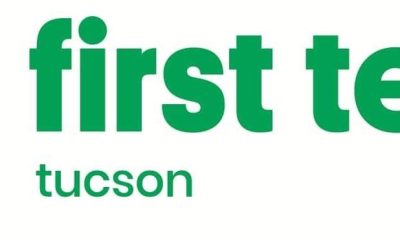
 Rec Sports3 weeks ago
Rec Sports3 weeks agoFirst Tee Winter Registration is open
-

 Rec Sports2 weeks ago
Rec Sports2 weeks agoFargo girl, 13, dies after collapsing during school basketball game – Grand Forks Herald
-

 Motorsports3 weeks ago
Motorsports3 weeks agoCPG Brands Like Allegra Are Betting on F1 for the First Time
-

 Motorsports3 weeks ago
Motorsports3 weeks agoF1 Las Vegas: Verstappen win, Norris and Piastri DQ tighten 2025 title fight
-
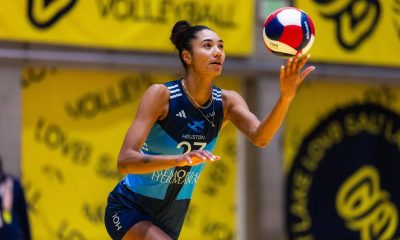
 Sports3 weeks ago
Sports3 weeks agoTwo Pro Volleyball Leagues Serve Up Plans for Minnesota Teams
-

 Sports3 weeks ago
Sports3 weeks agoUtah State Announces 2025-26 Indoor Track & Field Schedule
-
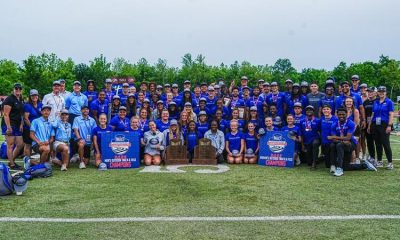
 Sports3 weeks ago
Sports3 weeks agoSycamores unveil 2026 track and field schedule
-
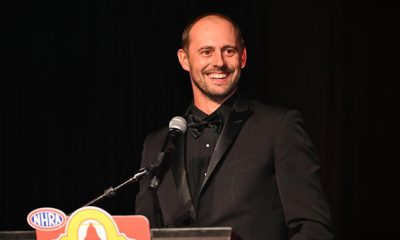
 Motorsports2 weeks ago
Motorsports2 weeks agoRedemption Means First Pro Stock World Championship for Dallas Glenn
-

 Motorsports2 weeks ago
Motorsports2 weeks agoJo Shimoda Undergoes Back Surgery
-

 Sports3 weeks ago
Sports3 weeks agoTexas volleyball vs Kentucky game score: Live SEC tournament updates


























